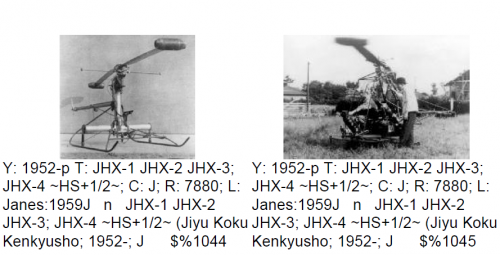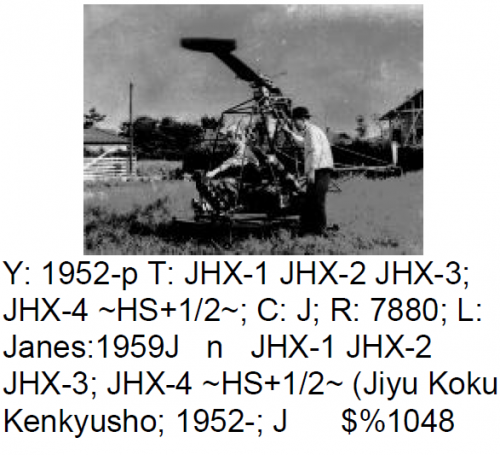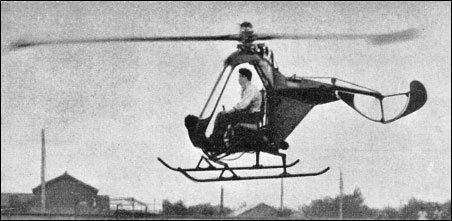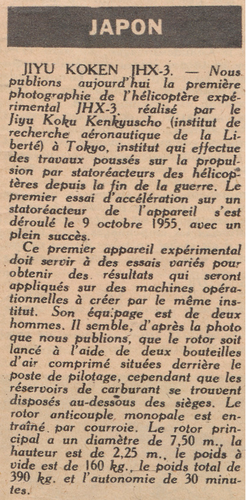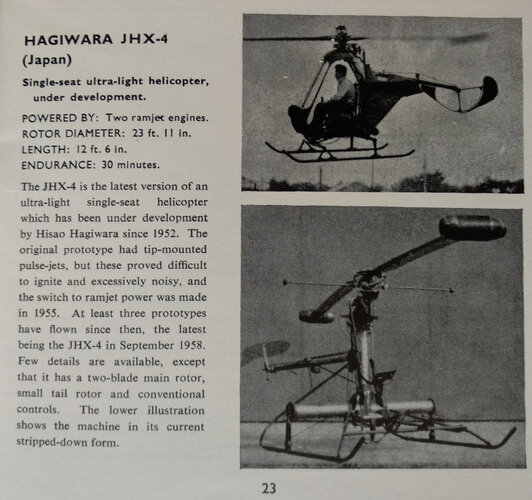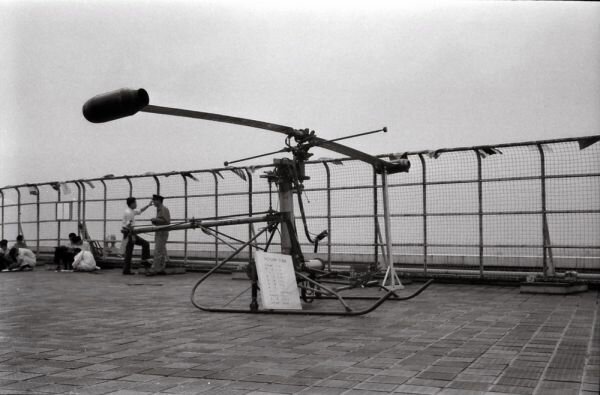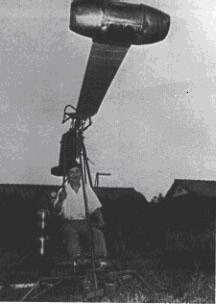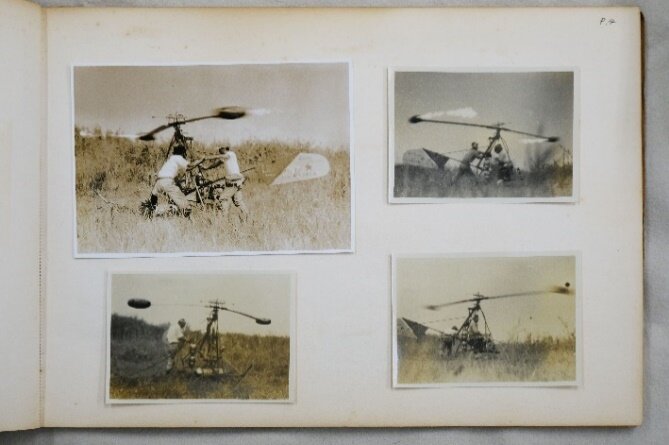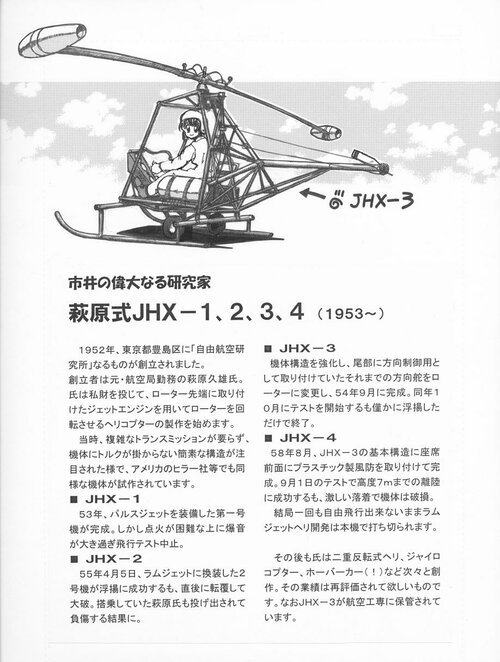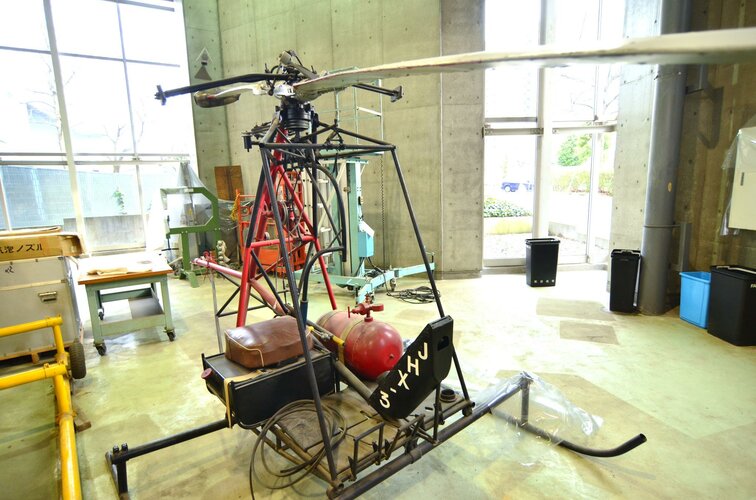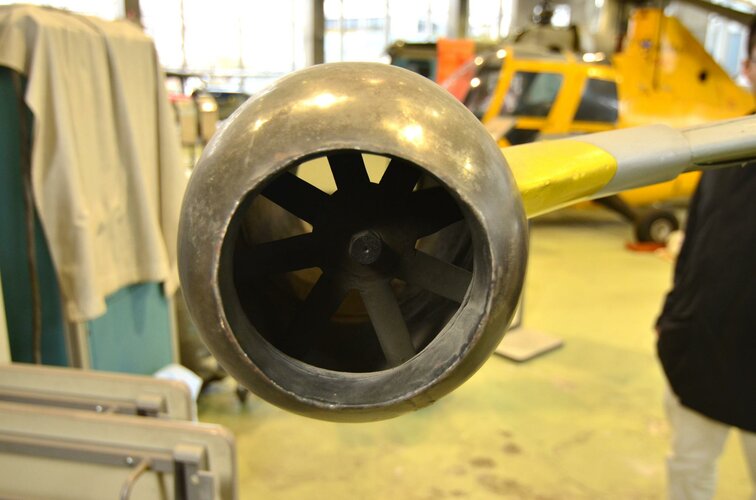I did find that one - online archive:
https://gallica.bnf.fr/ark:/12148/bpt6k5322701q/f16.item
Please let me share with you results of my recent research on these helicopters:
In the first post you have presented three pictures. The last one is commonly agreed to represent the JHX-4 helicopter. The second is the easiest as the helicopter itself on this picture is signed - the JHX-3 (the same picture is better visible in the link to the french archives above). This helicopter still exist and is on display at the Arakawa Campus, Tokyo (科学技術展示館,
>>google img on maps1<< >>google img on maps2<< >>some page on the exhibition<<)
The first picture is the most tricky for me right now. I actually have found one page which states what it is, but it is not really confirmed. But let me start from the books first. Among my private library I was able to find only two mentions of the Hagiwara helicopters. The one is in the second edition of Helicopters & autogyros of the world by Paul Lambermont. It only briefly describes JHX-3 and JHX-4. The other one I found in the ABC Helicopters by J.W.R. Tylor from 1960. It describes JHX-4 and presents the first picture from the first post here. This entry states that it presents the JHX-4 in "its current stripped-down form". I don't really buy this. The helicopters of that era were often made as a truss or frame clad with some plywood or sheet-metal (like Bendix model K). So I expect the striped-down form to represent the same landing gear, controls, the tail rotor transmission, etc. But it is clearly visible that this is not the case. Also it looks like the main vertical and transverse beams are actually a propellant tanks integrated to take some structural load. See it yourself:
View attachment 681220
JHX-5 - this is the name attached to the other photo of this helicopter:
View attachment 681221
If I understand it correctly, it was taken in 1959 at the opening event of the roof-top heliport. Source
>>page<<
There is at least two pages which also mentions JHX-5
>>link<<, and this is a google translated extract from one of them:
This post is getting long, but I'm not done yet.
Most sources states also about existence of JHX-1 (with puls-jet engines) and JHX-2 (with ram-jet engines like others). I failed to find any picture or illustration of JHX-1, but in respect to JHX-2, I've came across this (click to go to source page):
View attachment 681224View attachment 681225
Almost done. There is also a kind of leaflet on the subject of these helicopters:
View attachment 681226
Done. Tell me what you think of it? Do you have some information to complement my findings?

